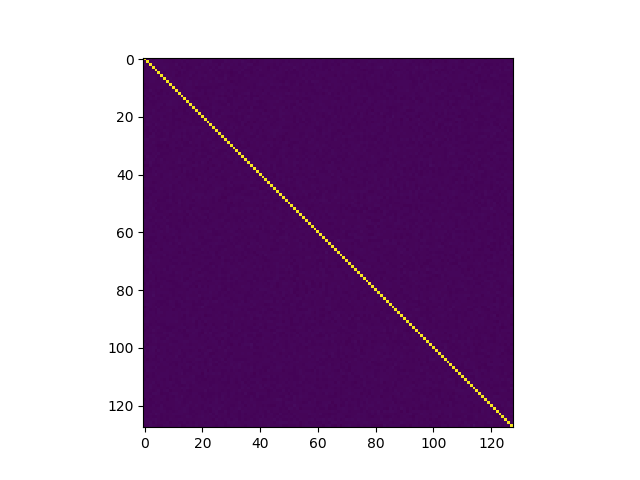Dr. James Howe Cryptography Researcher and Engineer
Statistically Acceptable GAussians (SAGA)

This is a quick summary of a project I did in collaboration with Thomas Prest, Thomas Ricosset, and Mélissa Rossi on designing a statistical test suite for Gaussian samplers, both univariate and multivariate. The details of this can be found in our paper: https://eprint.iacr.org/2019/1411.
Introduction
SAGA (Statistically Acceptable GAussians) is a test suite proposal for verfying statistical correctness for univariate and multivariate Gaussians. The paper accompanying this code has been published at PQCrypto 2020 and is also available on ePrint. The following will briefly describe how to setup and use the python script.
Installation
This standalone implementation should be able to run on most machines. We have provided a requirements.txt file to install all the dependencies; install these can be done by simple running pip install -r requirements.txt for Python 2 or pip3 install -r requirements.txt for Python 3.
How to use
Along with the main file to run these statistical tests, saga.py, we also provide code for our proposed sampler [1] in the files sampler.c, sampler.py, where sampler_rep.py is a file we use to get data on the repetition rate. We also provide falcon/ and testdata/ for python implementations of Falcon and its output values.
Example for univariate samples
Suppose we want to test the normality of a (Python) list of univariate samples stored in data, with expected center mu and expected standard deviation sigma. This can be done by this snippet of code in Python:
>>> import saga # import the test suite
>>> mu = -0.920619
>>> sigma = 1.711864
>>> data = [-1, 2, -4, 0, -2, 1, -2, -3, -1, 1, -1, 0, 0, 1, -4, -1, -2, -2, -1, 0, 1, -1, 2, -3, 2, 0, -1, -2, 0, -3, -1, -2, -1, 1, -5, -1, -2, -2, -1, 0, 2, 1, 0, 0, 1, -1, -2, -2, -1, 0, 2, -2, -1, -3, 0, 0, 0, -2, 0, 0, 0, -3, -4, 0, 1, -1, 0, -1, 1, -3, 0, 0, -3, 0, -4, -1, -2, 0, 0, -2, -2, -1, 1, -1, 0, -2, -2, -2, 0, -1, -4, -2, 0, -2, -2, 1, -1, 0, -3, -1]
>>>
>>> res = saga.UnivariateSamples(mu, sigma, data)
>>> res
Testing a Gaussian sampler with center = -0.920619 and sigma = 1.711864
Number of samples: 100
Moments | Expected Empiric
---------+----------------------
Mean: | -0.92062 -0.92000
St. dev. | 1.71186 1.51446
Skewness | 0.00000 -0.25650
Kurtosis | 0.00000 -0.26704
Chi-2 statistic: 4.033416341364921
Chi-2 p-value: 0.4015023295495953 (should be > 0.001)
How many outliers? 0
Is the sample valid? True
This creates an object res, and printing res gives expected and empiric moments (of order 1 to 4), a Chi-square p-value and the number of outliers (samples outside of the expected bounds). Here we can see that the samples are not rejected by our tests.
Example for multivariate samples
Now suppose we want to test the normality of a (Python) list of multivariate samples stored in data, with expected center 0 and expected standard deviation sigma. For simplicity and because it applies to most multivariate samplers, the expected center is always considered as zero. One can still translate the samples if the expected center is (integral) nonzero. For replicability, we generated data and sigma by parsing raw data contained in the 39.2 MB file falcon64_avx2. The following snippet of code in Python shows the required course of action:
>> import saga
>> sigma, data = saga.parse_multivariate_file("testdata/falcon64_avx2") # parse raw file
>> res = saga.MultivariateSamples(sigma, data) # compute tests
>> res # print results
Testing a centered multivariate Gaussian of dimension = 128 and sigma = 171.831
Number of samples: 63960
The test checks that the data corresponds to a multivariate Gaussian, by doing the following:
1 - Print the covariance matrix (visual check). One can also plot
the covariance matrix by using self.show_covariance()).
2 - Perform the Doornik-Hansen test of multivariate normality.
The p-value obtained should be > 0.001
3 - Perform a custom test called covariance diagonals test.
4 - Run a test of univariate normality on each coordinate
1 - Covariance matrix (128 x 128):
[[ 0.997 -0.0021 0.0065 ... 0.0014 0.0012 -0.0039]
[-0.0021 1.0001 -0.0014 ... 0.0032 0.0005 -0.0048]
[ 0.0065 -0.0014 1.0028 ... -0.0006 0.0074 0.0065]
...
[ 0.0014 0.0032 -0.0006 ... 1.0063 -0.0022 -0.0005]
[ 0.0012 0.0005 0.0074 ... -0.0022 0.993 -0.0008]
[-0.0039 -0.0048 0.0065 ... -0.0005 -0.0008 1.0081]]
2 - P-value of Doornik-Hansen test: 0.2453
3 - P-value of covariance diagonals test: 0.3244
4 - Gaussian coordinates (w/ st. dev. = sigma)? 128 out of 128
The p-values given by items 2 and 3 are > 0.001, and item 4 states that each coordinate looks Gaussian (in average, we expect 128 * 0.001 coordinates to be rejected), hence this list of samples pass our test of multivariate normality. In addition, one can plot the covariance matrix by typing res.show_covariance(), which gives:

[1] James Howe, Thomas Prest, Thomas Ricosset, and Mélissa Rossi. Isochronous gaussian sampling: From inception to implementation. Cryptology ePrint Archive, Report 2019/1411, 2019. https://eprint.iacr.org/2019/1411.
Provided with absolutely no warranty whatsoever